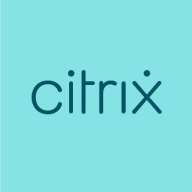

IBM PowerVM and Citrix XenServer compete in the virtualization category. PowerVM seems to have the upper hand due to its advanced features like Live Partition Mobility and its strong reputation for stability and security.
Features: IBM PowerVM offers advanced capabilities such as Active Memory Sharing, Live Partition Mobility, and high security to efficiently manage resources and ensure compliance. Citrix XenServer, on the other hand, boasts ease of setup, management with Windows-based applications, and real-time performance monitoring, accommodating Windows and Linux OS compatibility.
Room for Improvement: IBM PowerVM is often criticized for its high cost and limited OS compatibility, which restricts it to IBM-approved systems. Users also call for improved cloud integration and a more user-friendly interface. Citrix XenServer needs better management tools, enhanced Linux support, and integration with third-party solutions. The free version's limitations often push users towards its paid support for full functionality.
Ease of Deployment and Customer Service: IBM PowerVM is known for its effective technical support, characterized by responsive assistance, though some suggest improvements in complex cases. Citrix XenServer offers easy deployment, backed by average customer service and adequate technical support, which benefits from a broad user community.
Pricing and ROI: IBM PowerVM is priced at a premium, but users find its comprehensive licensing and reliability worth the investment, although cost remains a concern. Citrix XenServer's free edition is appreciated for its cost-effectiveness with available paid options. Despite significant cost savings compared to VMware, high licensing costs can deter budget-conscious buyers.
My clients generally maintain their Citrix infrastructure without shifting, suggesting stability and reliable operation as Citrix XenServer is fully established.
The return on investment is substantial, though other platforms may offer a better ROI, primarily due to lower costs involved in setup and maintenance.
If calculated over a five-year period, IBM PowerVM is 30 to 40% more cost-effective than physical servers despite initial costs seeming high.
They do not provide adequate support for midsize businesses.
Since being acquired, Citrix's customer service has experienced delays in response time.
IBM provides strong support.
IBM offers excellent customer support.
IBM has an established technical support team and partners who provide extended support to end customers.
Familiarity with Linux can enhance its performance and usability.
An IBM server can handle up to sixty-four terabytes of RAM.
I think IBM PowerVM uses a 'pay as you grow' model, allowing customers to scale their resources as needed.
The stability of IBM PowerVM is exceptional, as industry reports have named IBM Power and Z as the most stable platforms globally for 15 consecutive years.
Our clients in India using Power Servers have been running their servers for the last four to five years without any reboot.
Although the product is technically competitive, it is not widely known or used due to poor marketing.
Citrix needs to improve the hypervisor, specifically in security and performance.
We have a strong relationship with IBM, which aids decision-making in transitioning clients from mainframe to other platforms.
PowerVM should integrate some capabilities of VMware vCenter to improve its management features.
It is cheaper compared to its competitors.
The pricing and licensing policy of Citrix XenServer is not transparent and quite confusing.
While initially costly, the ROI over five years proves IBM PowerVM is cost-effective, resulting in a 30 to 40% reduction in costs compared to a physical setup.
PowerVM itself is free with the purchase of an IBM server.
Pricing is a concern in Argentina due to the higher cost of mainframe solutions.
It is user-friendly and easy to deploy, making it an attractive option.
It provides secure access to applications and resources, which is crucial for us and our clients.
It supports specific workloads, like Oracle and SAP HANA, much better due to its shared processor pool feature which reduces licensing costs.
IBM PowerVM supports multiple operating systems such as IBM i, AIX, and Linux, allowing users to run various applications seamlessly in a cloud environment.
PowerVM excels in efficiently managing all systems and environments, including development, UI, and production.


Citrix XenServer is a virtualization platform used in industries such as banking, automotive, and data applications for cloud automation, server virtualization, and VDI scenarios. It supports infrastructure management, virtual machine hosting, and enterprise software deployment, reducing costs by migrating from other platforms.
As a virtualization tool, Citrix XenServer stands out for its ease of maintenance, support, scalability, and centralized management. Commonly deployed on-premises and in data centers, it provides real-time monitoring, live migration, and strong security features. With compatibility across many operating systems, users benefit from a Windows-based management interface that is easy to install and navigate. Integration capabilities with active directory, storage, and load balancing contribute to resource optimization and reliability.
What are the key features of Citrix XenServer?Implementation in banking, automotive, and data applications leverages Citrix XenServer's strengths in cloud automation and virtualization. Organizations manage resources, deploy services, and ensure stable operations within their infrastructure. The platform is used both on-premises and in data centers, aiding in areas such as cost reduction and maintenance efficiency.
We monitor all Server Virtualization Software reviews to prevent fraudulent reviews and keep review quality high. We do not post reviews by company employees or direct competitors. We validate each review for authenticity via cross-reference with LinkedIn, and personal follow-up with the reviewer when necessary.